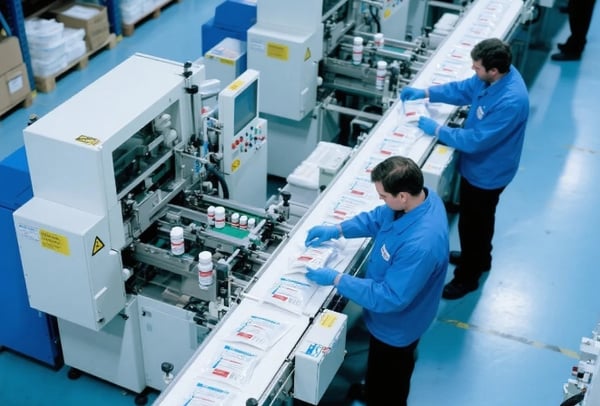Guardians of Every Dose: The Unsung Heroes Behind Safe Medicine

These workers are the guardians of every dose, standing on the frontlines of quality control, safety assurance, and medical reliability. Their job may not be glamorous, but without them, even the most advanced medicine could become a threat rather than a cure.
The First Line of Final Defense
Pharmaceutical packaging is more than putting tablets into bottles or sealing blister packs. It’s a critical step in the drug manufacturing chain that ensures safety, accuracy, and compliance with stringent regulations. A single error—whether it's incorrect labeling, contamination, or dosage miscount—can endanger lives.
Packaging workers are trained to operate with military-like precision. Whether they’re handling a manual process or overseeing automated systems, their focus must remain unwavering.
“Every box, every bottle, every foil pack—we treat it like it’s going to our own family,” says James, a packaging line supervisor at a major pharmaceutical company. “Because in the end, it could be.”
A Day on the Line: Speed Meets Sterility
A typical day for a pharmaceutical packaging worker starts with strict sanitization protocols. Workers suit up in cleanroom garments—hair nets, gloves, face masks, and sometimes full-body gowns—to maintain a sterile environment. Contamination is not just a concern—it’s a liability.
The work involves operating machines that fill, seal, label, and box medicines. Workers are expected to monitor each step, stopping production if even a minor issue is detected. Sensors and computers assist, but the human eye remains essential for spotting subtle irregularities.
Speed is important, but never at the cost of quality. With production targets often in the tens of thousands per day, the balance between efficiency and meticulous care defines the job.
Accuracy Isn’t Optional—It’s Life-Saving
Unlike general packaging jobs in other industries, pharmaceutical packaging workers deal with products that go into people’s bodies. Every label must be readable, every barcode scannable, every instruction accurate. The consequences of a mistake can be devastating.
A wrongly labeled medication could cause allergic reactions, dangerous drug interactions, or overdoses. This is why workers are trained in Good Manufacturing Practices (GMP) and must adhere to Standard Operating Procedures (SOPs).
“You need to be both fast and faultless,” says Amina, a packaging technician. “We double-check everything—sometimes triple-check. It's part of our responsibility.”
The Emotional Toll of Invisible Work
While doctors and pharmacists are often praised, pharmaceutical packaging workers rarely get public recognition. Yet their work is foundational to the healthcare ecosystem.
During the COVID-19 pandemic, these workers became essential personnel, packaging vaccines, antiviral medications, and other critical supplies. They worked long hours, often in high-risk environments, without fanfare or applause.
“People clapped for nurses and doctors—and rightfully so,” says Amina. “But we were here too, making sure every vaccine vial reached safely.”
This invisibility can take an emotional toll. The job demands perfection under pressure but offers little visibility or appreciation. Still, many workers take pride in their roles, knowing their efforts protect millions of lives.
Technology Helps, but People Matter
The pharmaceutical industry is increasingly automated, but packaging is still a human-centered process. Machines can fill capsules and label boxes, but it’s people who ensure that nothing goes wrong—people who notice when a batch smells slightly off, or when a box corner is dented in a way that could compromise the product inside.
In fact, it’s often the keen eyes and sharp instincts of workers that catch critical issues before they become disasters. And when technology fails, it’s these unsung heroes who step in.
“Machines don’t make ethical decisions—we do,” says James. “That’s why trained workers will always be essential.”
Training, Discipline, and Skill
Becoming a pharmaceutical packaging worker isn’t as simple as punching a timecard. Many companies require background checks, certifications, and in-depth training in hygiene, hazard control, and pharmaceutical compliance. Workers must understand medical terminology, dosage measurements, and how to spot defects.
It’s a skilled profession, often underestimated by those out